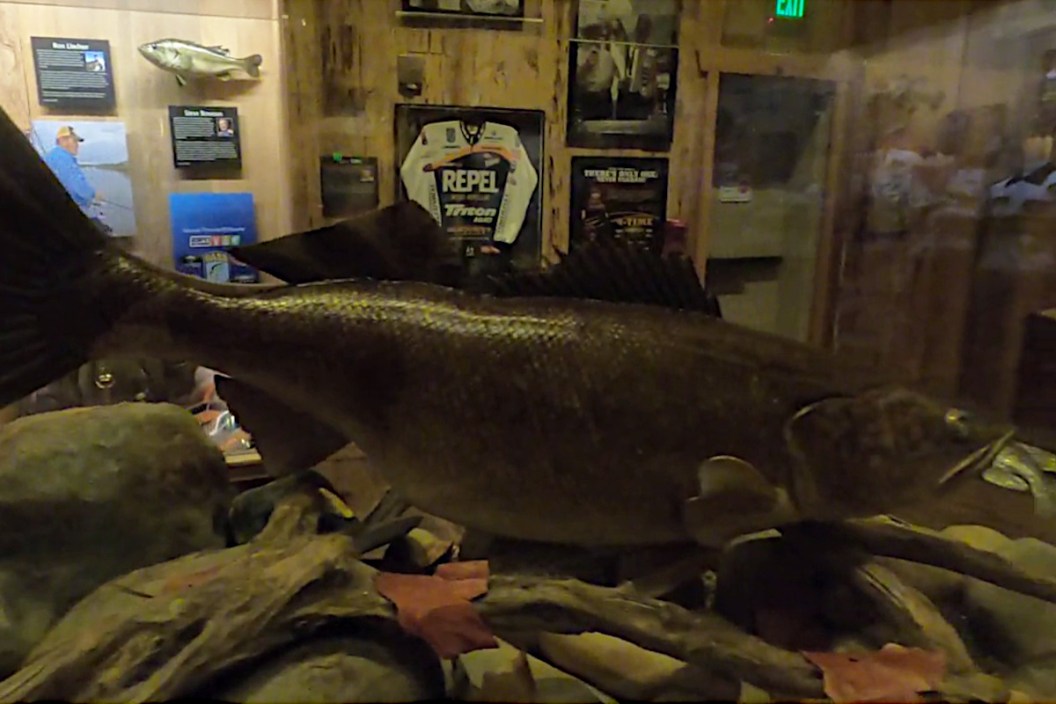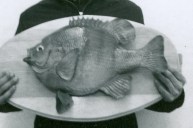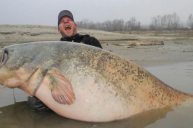There may be no freshwater fishing world record that's more controversial than that of the world record walleye. This is mainly because anglers are truly divided on exactly which fish holds the rightful crown as the biggest walleye ever caught. The controversy was enough to strike one fish out of the record books for years before eventually being re-instated following further investigations into the matter. The constant back-and-forth writing and rewriting of the pages of walleye fishing history is enough to give any angler a headache. It's a wild tale full of controversy, confusion, and an infusion of new evidence decades after the first fish was originally caught. We wouldn't blame you if you didn't know what to believe after hearing this tale, mostly because that's the way we felt after researching the topic thoroughly. This is the controversy of two record keeping organizations and how they handled the biggest walleye ever caught on hook and line.
The Mabry Harper Walleye is Caught
Mabry Harper's fish is where all the controversy over the rightful world record comes into play in this story. Harper was a Tennessee plumber who used almost every spare second of his free time fishing. On August 2, 1960, the fisherman headed out to Old Hickory Lake, which is a reservoir formed partly from the Cumberland River outside of Nashville. Harper was hoping to catch some large catfish for the dinner table that night.
Because he was hoping for an entirely different species of game fish, he was using some ultra-heavy equipment. The Newton County Enterprise reports he was using 75-pound test line. According to the International Game Fish Association, he also used a heavy-duty Betts rod and a Pflueger reel. It was perfect for big blue or flathead cats, but a bit overkill for walleye. One interesting facet of this story is that information on the type of bait used by Harper seems to be lost to time. It's probably safe to assume it was some type of traditional catfish bait or cut bait.
It's worth noting that a record fish was probably the last thing on Harper's mind at the time. Tennessee isn't exactly known as a big fish factory for walleye. That was the scenario back in 1960 and even into today. In any case, it wasn't long before Harper had a big fish on the end of the line. When he finally landed the fish, he realized it wasn't the catfish he was looking for, but decided to take it home just the same.
Legend has it that it was Harper's wife he begged him to take the fish to have it weighed and measured. They did just that, taking it to a local tackle shop where the fish weighed in at 25 pounds on the nose. The fish measured an eye-popping 41 inches long and had a massive 29-inch girth. The weigh-in was witnessed by a local game warden, James Spurling. Remember that name, he comes in key later in this big fish tale.
From there, the story has an interesting parallel to the story of the world record largemouth bass. Just like George Perry, Harper took the big fish home and ate it for dinner! Many people figured that would be the end of the story. The Harper fish soon took the mantle as the world record for both the IGFA and the Freshwater Fishing Hall of Fame's record books. It would sit in the number one slot for the next 30 years.
The Weight Controversy Begins
Fast-forward to the year 1996 and all hell breaks loose in the world of fishing records with an expose article in Outdoor Life by contributing writer Dick Sternberg, one of the original 20 members of the Freshwater Fishing Hall of Fame. Sternberg's article shined some doubts on the largest walleye ever caught. Up until that point, most people knew the Harper walleye from a single photo of the angler himself holding it. To be fair, the claimed size does seem slightly questionable when looking at it.
"The picture that most people saw, it didn't look like a very big walleye, it didn't look like a 25-pound walleye," Bobby Wilson of the Tennessee Wildlife Resources Agency told Wild Side TV in a 2012 video interview.
That photo was the main crux of the argument. Sternberg claimed a photo analysis that compared the average measurement of a man's hands to the fish in question revealed the Harper walleye couldn't possibly be 41 inches long. There was enough doubt cast on the fish for the Freshwater Fishing Hall of Fame to decide to remove the fish from the books shortly after.
The new fish that took the place in the record books as the biggest of all time was a massive 22-pound, 11-ounce walleye caught by Al Nelson on Greers Ferry Lake in Arkansas in 1982. Nelson caught that huge fish while trolling a Bomber lure during a tournament. This massive fish measured 35 inches long and had a 27-inch girth. The Nelson walleye is still the 12-pound line class world record in the IGFA record books.
How the Harper Fish Was Reinstated as the World Record
Obviously, all this talk of average hand size and the fish not being as large as claimed didn't sit well with Harper's surviving relatives.
"I thought that was a lot of bologna," Harper's step son Jerry Robertson told Wild Side TV. "You can't prove how big somebody's hand is by a picture."
It didn't sit well with locals, and some historians doubted it, too. To be fair, we should note that the Harper walleye would likely not be accepted as a world record today if the exact same scenario played out. That's because the scales the fish were weighed on were uncertified. Fortunately for Harper, game warden James Spurling was there to witness the weigh-in. Spurling later tested the scales and found them to be four ounces heavy when compared to a certified scale. The original weight of Harper's walleye was 25 pounds, four ounces. The warden documented this and a re-weighing of the fish in two separate affidavits. They were dug up by Trousdale County Historian John Oliver.
Oliver also unearthed lots of other supporting documents and some new photos of the fish that had not been seen by the public. A few of them show Mabry's wife holding the fish. One of them was taken in front of the door of a 1959 Plymouth, which gave an object of known size to compare the fish to for the first time ever.
Another key photo showed the head of the walleye after Harper had cut it up for dinner. On top of the fish's head is a ruler that shows exactly how big the head of this fish was. Oliver decided to further drive home the point to the Freshwater Fishing Hall of Fame by enlarging one of the photos of Mabry's wife to life-sized. The fish measures 41 inches long in that jumbo-sized photo.
The Freshwater Fishing Hall of Fame conducted their own investigation of all the evidence. This included a lengthy look at the arguments made about the size of Harper's hands compared to the fish. The Hall of Fame ultimately determined there wasn't enough evidence there to disprove the claims of a 41-inch fish. In 2019, the Hall of Fame finally reinstated the Harper walleye as the largest ever caught in their books. It's worth noting the IGFA never struck the Harper walleye from the books. Perhaps they were more cautious to disqualify a fish after the whole debacle involving the world record smallmouth bass. It's hard to say for sure.
Lessons Learned From the World Record Walleye
There always seems to be some controversy with walleye in the record books. In 2019, the North Dakota Game and Fish Department denied a new state record claim for a 16-pound, 9-ounce walleye that investigators claimed was foul-hooked through the back, much to the chagrin and protest of the angler who caught it.
The unfortunate part of stories like these is the confusion it creates for anglers who caught big fish. It's not fair for someone like Al Nelson and his great catch to get caught in the middle. To go from number two to number one and then back to number two again would be depressing for any angler.
On the other hand, we also cannot blame Dick Sternberg for raising questions about the size of the catch. After all, he was doing his job. And the Harper walleye looks very different in the photo with Mabry than it does in the photos with his wife. Maybe it's just the type of camera, or the angle, or Mabry just had abnormally large hands. We may never know, but it looks smaller in the photo with Mabry for some reason.
At the end of the day we should all want legitimacy and accuracy in our record books, especially when a new record unexpectedly comes from a state where giants of the species are not known. Hearing cases like this and the world record smallmouth, or the world record muskie, there's little wonder record keeping organizations have such stringent rules and regulations these days.
The greater lesson here may be that you just never know when a record fish is going to strike. You should always be ready for that possibility with equipment necessary to document the catch when and if it occurs. Otherwise, you might just end up with a lot of people thinking you're telling just another angler's tall tale.
For more outdoor content from Travis Smola, be sure to follow him on Twitter and Instagram For original videos, check out his Geocaching and Outdoors with Travis YouTube channels.




